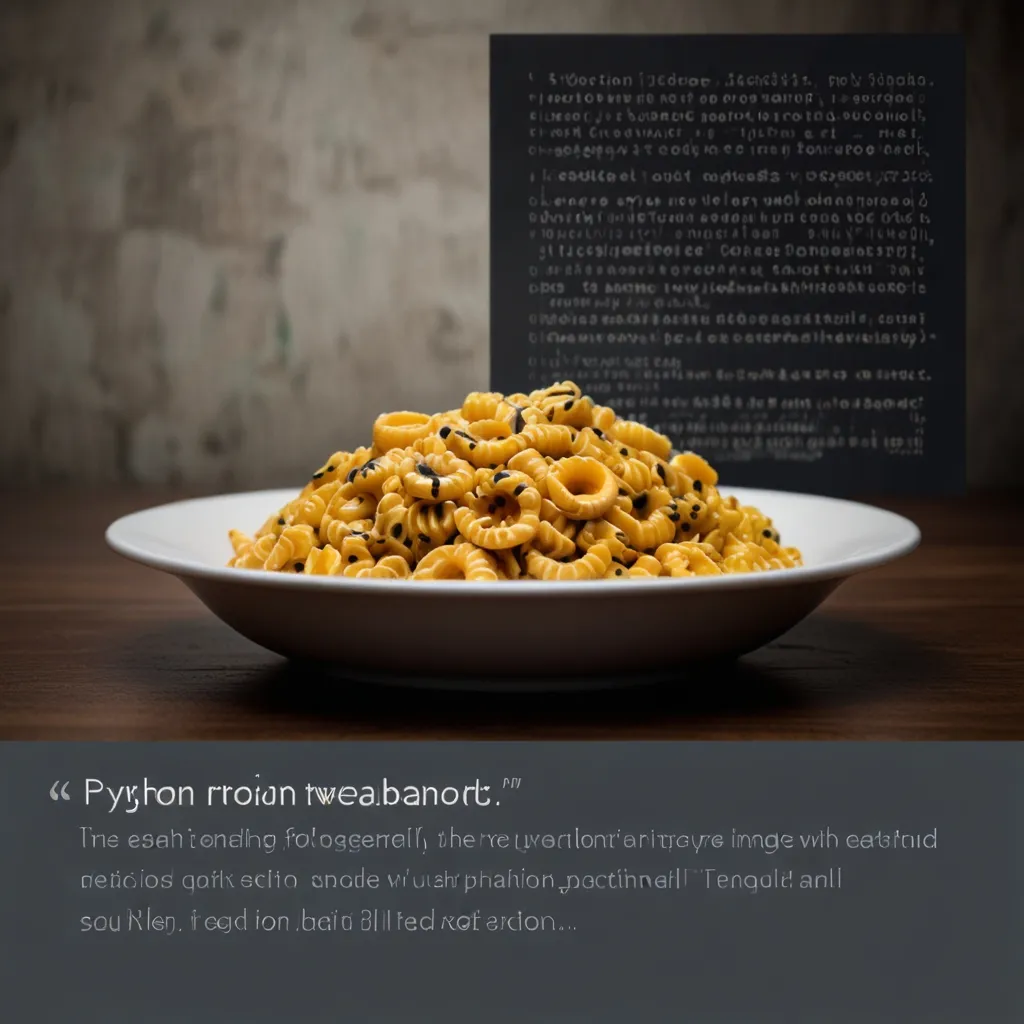Hey there, fellow tech enthusiasts! Today, we’re diving into the fascinating world of Zero-Copy Slicing and High-Performance Data Manipulation with NumPy. If you’re a programmer or data scientist, you’ve probably encountered situations where you need to work with large datasets efficiently. Well, you’re in luck because we’re about to explore some seriously cool techniques that’ll make your code run faster than ever before!
Let’s start with Zero-Copy Slicing. It sounds fancy, right? But don’t worry, it’s not as complicated as it seems. Essentially, zero-copy slicing is a technique that allows you to create views of data without actually copying the data itself. This is super useful when you’re working with large arrays or datasets because it saves memory and improves performance.
In Python, NumPy is the go-to library for high-performance numerical computing. It’s got some nifty features that make zero-copy slicing a breeze. Let me show you an example:
import numpy as np
# Create a large array
big_array = np.arange(1000000)
# Create a view of the array (zero-copy slice)
view = big_array[10:100000:2]
# Modify the view
view += 1
# The original array is also modified
print(big_array[10]) # Output: 1
In this example, we create a large array and then create a view of it using slicing. The cool thing is that when we modify the view, it actually modifies the original array without creating a copy. This is zero-copy slicing in action!
Now, let’s talk about high-performance data manipulation with NumPy. NumPy is like a Swiss Army knife for data scientists and programmers. It’s got tons of powerful features that make working with large datasets a breeze.
One of my favorite things about NumPy is its broadcasting capability. It allows you to perform operations on arrays of different shapes and sizes without explicitly looping over the elements. This not only makes your code more concise but also significantly faster. Check this out:
import numpy as np
# Create two arrays of different shapes
a = np.array([[1, 2, 3], [4, 5, 6]])
b = np.array([10, 20, 30])
# Add them together using broadcasting
result = a + b
print(result)
# Output:
# [[11 22 33]
# [14 25 36]]
Isn’t that neat? NumPy automatically aligns the arrays and performs the addition element-wise. This would have been a lot more code if we had to do it manually!
Another powerful feature of NumPy is vectorization. It allows you to replace slow Python loops with fast, pre-compiled C code. This can lead to massive performance improvements, especially when dealing with large datasets. Here’s a simple example to illustrate the difference:
import numpy as np
import time
# Create a large array
arr = np.random.rand(1000000)
# Using a Python loop
start_time = time.time()
result_loop = [x**2 for x in arr]
loop_time = time.time() - start_time
# Using NumPy vectorization
start_time = time.time()
result_numpy = arr**2
numpy_time = time.time() - start_time
print(f"Loop time: {loop_time:.6f} seconds")
print(f"NumPy time: {numpy_time:.6f} seconds")
Run this code, and you’ll see that the NumPy version is way faster than the Python loop. It’s like comparing a sports car to a bicycle!
Now, let’s talk about memory management. When you’re working with large datasets, memory usage becomes a crucial factor. NumPy provides several methods to help you manage memory efficiently. One of these is the np.memmap function, which allows you to map very large arrays stored on disk directly to memory. This is super useful when you’re dealing with datasets that are too large to fit in RAM.
Here’s a quick example of how to use np.memmap:
import numpy as np
# Create a memory-mapped array
mmap_array = np.memmap('my_big_array.dat', dtype='float32', mode='w+', shape=(1000000,))
# Write some data to it
mmap_array[:1000] = np.random.rand(1000)
# Flush changes to disk
mmap_array.flush()
# Later, you can load and use the array without loading it entirely into memory
loaded_array = np.memmap('my_big_array.dat', dtype='float32', mode='r', shape=(1000000,))
print(loaded_array[:10])
This technique allows you to work with arrays that are much larger than your available RAM, which is pretty awesome!
Another cool thing about NumPy is its support for structured arrays. These are arrays with named fields, similar to a database table or a spreadsheet. They’re super useful when you’re working with heterogeneous data. Check this out:
import numpy as np
# Create a structured array
dt = np.dtype([('name', 'U30'), ('age', 'i4'), ('weight', 'f4')])
people = np.array([('Alice', 25, 55.0), ('Bob', 32, 75.5), ('Charlie', 45, 80.2)], dtype=dt)
# Access data by field name
print(people['name'])
print(people['age'].mean())
This makes it easy to work with complex datasets in a very intuitive way.
Now, I know we’ve covered a lot of ground here, but there’s so much more to explore in the world of high-performance data manipulation with NumPy. We’ve barely scratched the surface! From advanced indexing techniques to linear algebra operations, NumPy has got you covered.
One thing I’ve learned from my experience is that mastering these techniques can really level up your programming game. Whether you’re building machine learning models, processing scientific data, or just trying to make your code run faster, these tools and techniques are invaluable.
So, my advice? Dive in, experiment, and don’t be afraid to push the boundaries of what you think is possible with your code. The more you play around with these concepts, the more comfortable you’ll become, and before you know it, you’ll be writing blazing-fast, memory-efficient code like a pro!
Remember, programming is as much an art as it is a science. It’s about finding elegant solutions to complex problems, and tools like NumPy give us the power to do just that. So go forth, code fearlessly, and may your arrays be ever in your favor!






